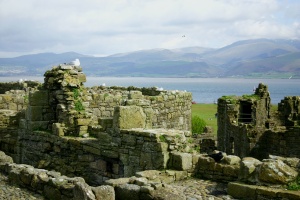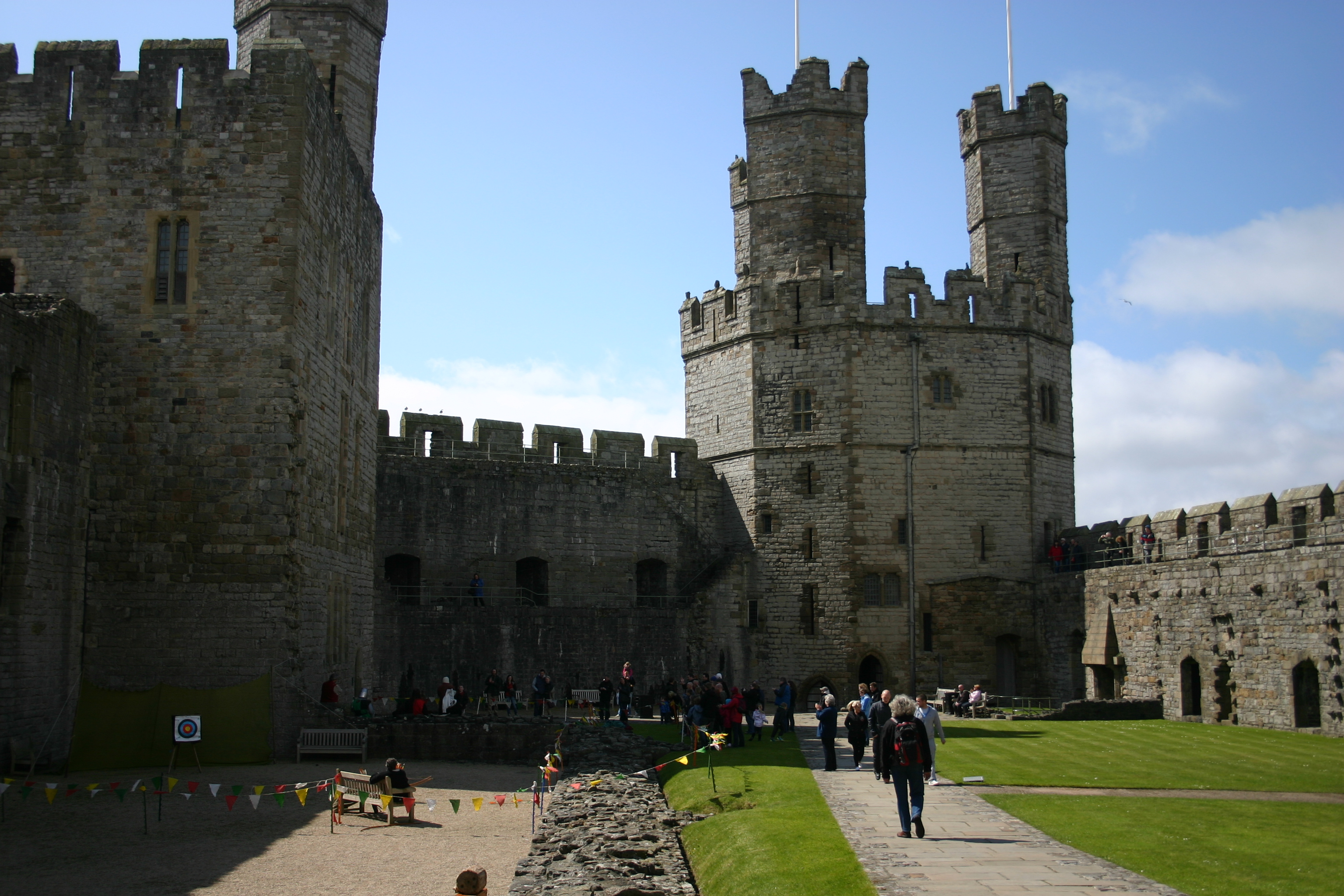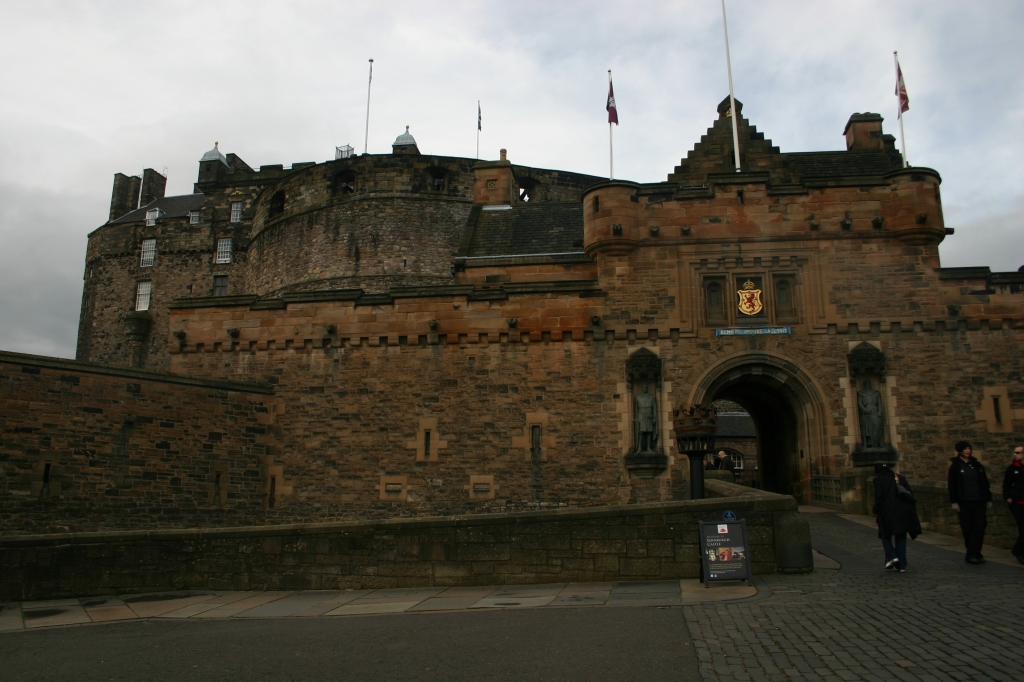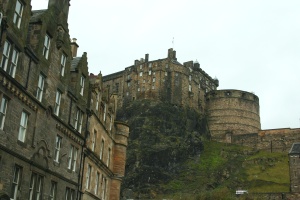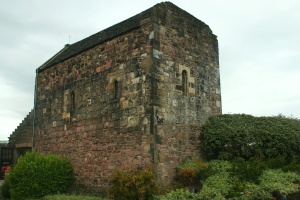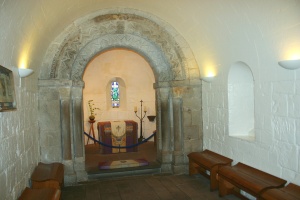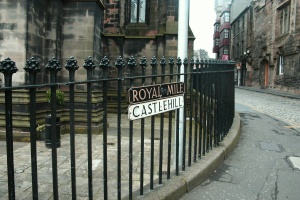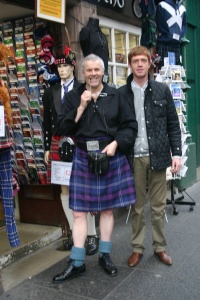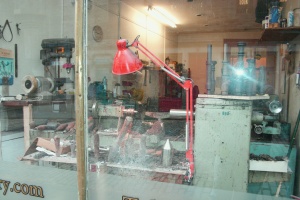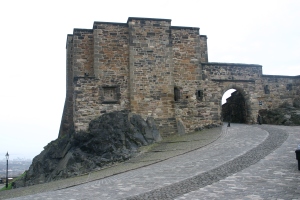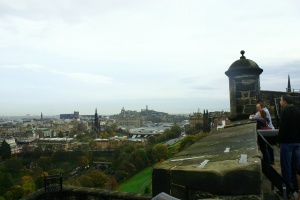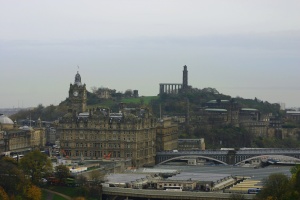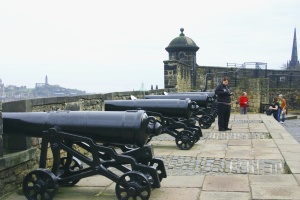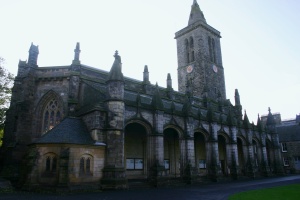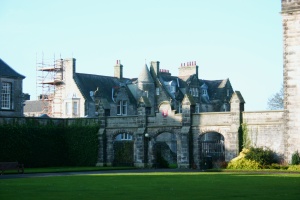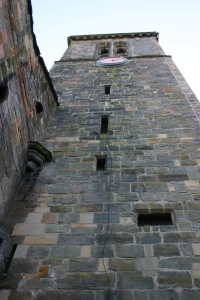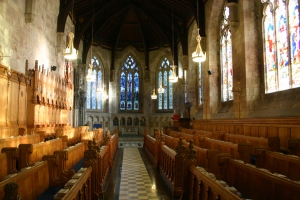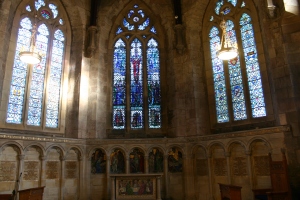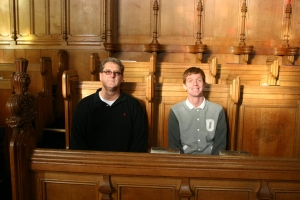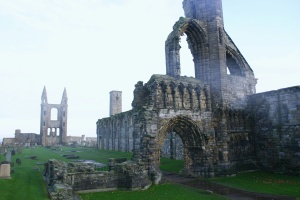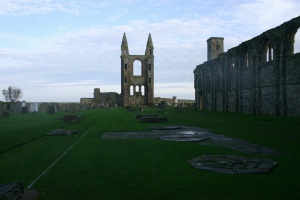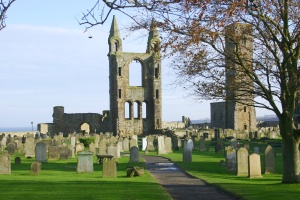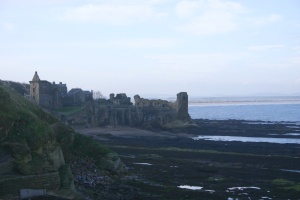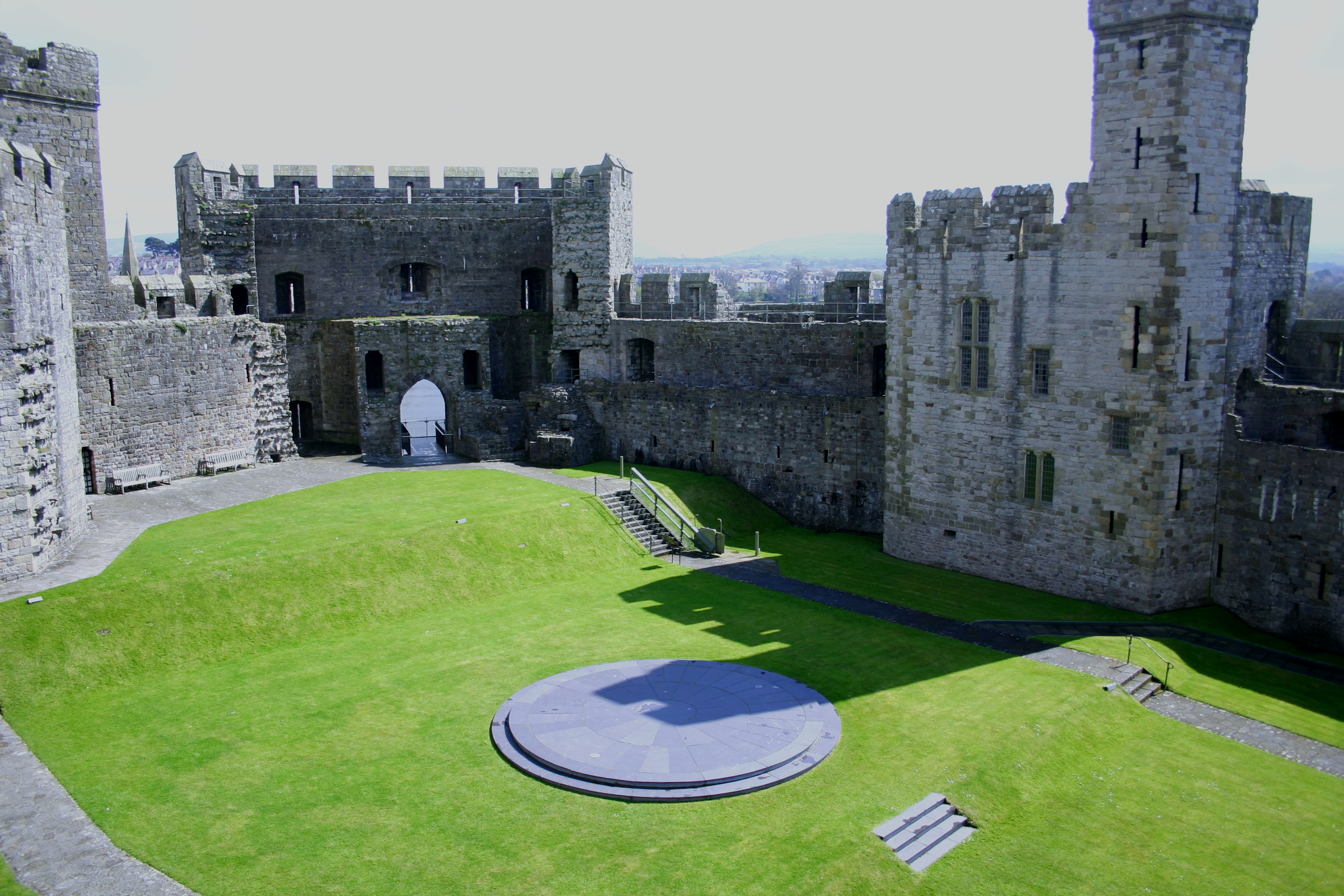
I try to spend some time reading about the historical places prior to my visit. A castle is only a stone building until you know the story. Few castles, if any I have visited, were ever lived in by a King or Queen. Why then build such an elaborate building? That is what makes these trips so interesting. However no matter how much I learn before I go there is always more to learn when I am there. After reading all the material from the trip I wish I could go back and see all that I missed.


As I have written previously, Great Britain uses post codes. They are like zip codes except these 6 alpha numeric sequences put you right at someone’s door. It is much more efficient than our lengthy street addresses. I don’t bother to even look at maps anymore but instead type the post code into my Sat-Nav (GPS to Americans) and take off for my adventure.
I live in the Manchester area which is in the north part of England (London is south east). My trip to Wales is almost due west and it takes me through the historic town of Chester and the west coast across from Ireland. The highways are not as fully developed as in the U.S. due to other forms of mass transportation being available like trains and buses.
I almost turned back as I left Manchester. It was Texas raining outside with large downpours and water collecting on the highway. Without an umbrella I knew this could be a bad day. Fortunately the clouds broke and a beautiful day appeared. George Strait and Garth Brooks were driving with me. Technology and abandoned ruins are amazing.
The History Behind the Castles of North Wales
After the Battle of Hastings in 1066 William I, also known as William the Conqueror, set a course to bring as much of the island as possible under Anglo-Norman military rule. That included what is today England in the south, the midlands and in the east. Wales is to the west and Scotland the far north. The original people of Wales were Celtic Britons who lived in the midlands of England and were pushed west by the invading Saxons from Europe. Wales developed into of a number of small kingdoms.
In 1283 King Edward I first envisioned building a ring of castles to north Wales to serve as administration centers and to house military garrisons. At an extraordinary expense and an unprecedented use of manpower he started building a series castles in northern Wales. This period of massive castle construction was a direct result of a victorious second campaign to subdue the Welsh prince Llwelyn Gruffudd. The conflict before the two invasions of Wales were the result of conflicts years early between King John, his successor Henry III and the princes of Wales notably Llwelyn. After Prince Llwelyn Gruffudd’s death in 1240 Henry III moved quickly to exploit the dissent between his two sons; Gruffudd, who was the legitimate heir, and Dafydd who had proclaimed to be the sole heir. Henry III prevailed over the two sons. During the follow low ebb for the Welsh royalty there was the emergence of a powerful new prince, Gwynedd, Llywelyn a Gruffudd, the grandson of the eldest Llywelyn. This young prince continued the fight and was so successful that Henry III had to formally recognize him as the Prince of Wales.
After the ascension of King Edward I to the throne of Eng land in 1272 the Welsh prince refused to give homage to the English king which resulted in the war of 1276-77. Prince Llywelyn was forced to negotiate surrender and gave up lands that are now western England. In addition he gave up a huge sum of money but was able to keep the heart of Wales; Snowdonia and the island Anglesey were retained by the Welsh.
The once proud and independent Welsh bristled under English rule for the next few years. Llewlyn’s treacherous younger brother Dafydd led a surprise attack on an English garrison and forced his older brother to remain faithful to the Welsh or side with the hated English. Lleywelyn sided with Dafydd which led to a national revolt. Once again King Edward invaded Wales with an army that included 800 calvary and 8,000 foot soldiers. It was an impressive army by 1292 standards.
Progress for an English victory was slow as the Welsh relied on guerilla warfare in the mountains. Llywelyn was killed in a skirmish and King Edward was able to focus his attention on his brother. It was during this time that King Edward first planned the construction of Caernarfon, Conwy and Beaumaris castles. In 1283 the fugitive Prince dafydd was captured. He was condemned to be drawn, hanged, disemboweled, and quartered. His head was displayed beside his brother Llywelyn’s on the gate of the Tower of London.
Edward I’s fearsome iron ring of colossal fortresses represents Europe’s most ambitious and concentrated medieval building project, designed to prevent the recurrence of two massively expensive military campaigns. The second Welsh uprising in 1282 was also ultimately unsuccessful and Edward, determined not to have to fight a third time for the same land, set about extending his ring of fortifications in an immensely costly display of English might. The castles at Caernarfon , Beaumaris and Conwy were all designed and built during this period fro 1283-1295.
King Edward sent for his master mason and architect James from St. George to lead these building efforts in north Wales. James from St. George would later become recognized as one of the greatest castle builders in all of Europe after building castles that were considered impregnable and beautiful. With great expense and effort, workers were brought from all over England to build as many as eight castles in northern Wales including Conwy Castle which was to serve as a resident of the King and a center of administration for the King in north Wales.
(CLICK ON THE PICTURES BELOW TO GET A LARGER VIEW AND GET A DESCRIPTION)

Caernarfon Castle
Caernarfon occupies a special place in Welsh history. From Roman times, pre-400 A.D., it has been a site of strategic and symbolic importance. King Edward I chose this site in part because of the legendary tale of Roman Emperor Magnus Maximus known to the Welsh as Macsen Wledig . When Maximus left Britain around 383 A.D. he took all his Roman troops and transferred authority to local figures. There are those who believe to this day he is the father of all Welsh royalty. Lianbeblig church was built on the location of the old Roman fort. It continues today as the mother church of the town of Caernarfon where Christian worship has been maintained since fifth century.



Caernarfon was the first Welsh castle built as a single entity; town and castle. It served as the administrative and judicial center of north Wales. Built to reflect is special status, the angular towers and color-banded walls recall the roman walls of the imperial city of Constantinople. In 1284 the Prince Edward, son of King Edward I, was born in Caernarfon and became the first English Prince of Wales.



In 1284 the Welsh rebelled and overran and severely damaged the city walls necessitating a massive repair effort. Caernarfon was besieged by Owain Glyn Dwr in 1403 and 1404. By 1538 it was in ruin and need of repair. Yet the walls remained sound and during the Civil War (1642-48) Caernarfon was held for the King until 1646 when the castle was surrendered to the parliamentary forces. In 1660 the government ordered the castle destroyed but the command was never carried out.




 In 1911 the castle was used for the first time to crown the Prince of Wales who became King Edward VIII. Charles, Prince of Wales, and later Prince William were both granted their titles in ceremonies held on the inner grounds of the castle.
In 1911 the castle was used for the first time to crown the Prince of Wales who became King Edward VIII. Charles, Prince of Wales, and later Prince William were both granted their titles in ceremonies held on the inner grounds of the castle.

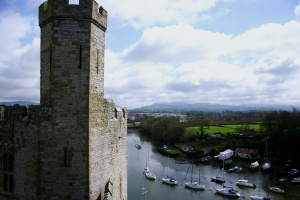


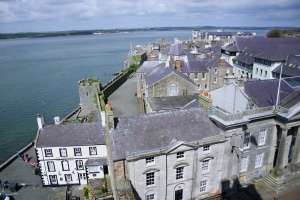

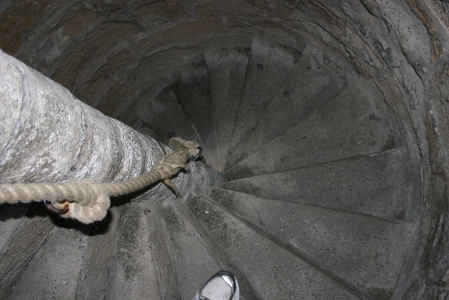

Conwy Castle
Conwy Castle is exceptional not only for the grand high towers and curtain walls but also for its excellent state of preservation. The castle contains the most intact set of residential buildings left by the medieval English monarchy in Wales or England.
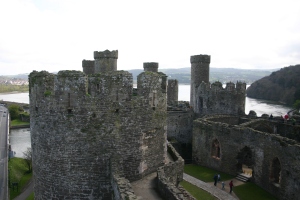

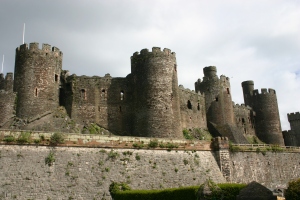

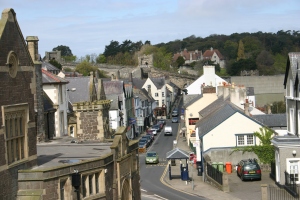
Unique about this castle was the planning of a walled city as well as a castle. The inner castle was to house the King’s garrison, his government officials and his own residence. Also built was a walled city adjacent to the castle. A location along the Conwy River was chosen. The castle was built on a foundation of rocks and the walled city on land next to the castle on a sloping hill leading up from the river.
What makes Conwy Castle to wonderful today to visit is that the castle and the city remain architecturally much as they were when built. The castle has been in ruin since the need for castle fortresses in Wales ended in 1485 with the crowing of Henry VII as the King of England. Henry was the grandson of a royal Welsh family, the Tudors. The city within the castle walls has remained since the castle was first built. As part of King Edward I plan to stabilize Wales, only Englishmen and English businesses were allowed within the gated walls. People were enticed to move to Wales from England with generous grants and reduced taxes. This separation was despised by the people of Wales but over a period of time commerce encouraged a natural transformation of the city to a Welsh city. There are a number of old buildings such as the abbey and several businesses that remain from the Elizabethan era, 1558 – 1603. The castle was originally started in 1283 with the castle walls complete in built in 1287.


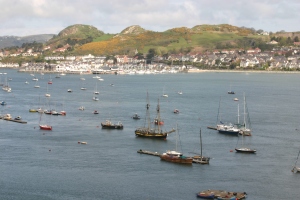


Interesting enough King Edward I only spent December and January of 1294/5 in the actual castle when another Welsh rebellion, led by Madog ap Llewlyn who was a distant relative of the princes’, besieged the castle. The siege lasted on a couple of months as supplies ran low for the rebels and the castle was never captured.
The castle may never have been conquered but it was taken over through a trick. In 1403 a rebellion lead by Owain Glyndwr planned to capture the castle during Easter Celebration with the garrison troops at church. Posed as carpenters two rebels were able to kill several guards and allow Owain and about 40 rebels into the castle. They were able to hold the castle for 3 months before a negotiated settlement was reached. They finally surrendered on favorable terms which included full pardons to the Tudors (Welsh family that eventually ruled England for 150 years) who had joined the rebellions. The castle was so easy to defend that 40 rebels were able to protect it against a much larger army.

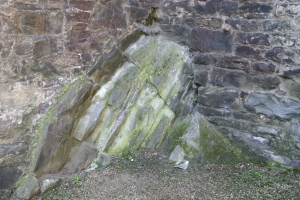


By the early 17th century the once great royal castle had become dilapidated and largely unused. However at the outbreak of the civil war in England (royalists versus parliamentarians) it was again used by the King. It was captured after a 3 month siege by the Parliamentary army in 1646. It was intentionally reduced to a castle shell by the Parliamentarians to ensure the King wouldn’t use it again and left in a similar state as today. The castle was later granted to Edward Conwy whose family wanted to restore the castle but it turned out to be too great an expense.
In the 20th century it became English property again and designated one of the top historical sites, by the World Heritage Site, in all of Europe. A Welsh non-profit has been operating the castle during the last three decades, a time of increased tourist trade as trains and highways made Conwy Castle more accessible.
Beaumaris Castle
Begun in 1295 Beaumaris Castle was the last of the royal stronghold to be built by King Edward I in Wales. It completed the chain of fortificataions with which he had begun to enclose the north Wales region of Gwynedd in 1277. After the death of the princes the Welsh resistance effectively came to an end and in 1284 Edward imposed a new English-style administrative system. Beaumaris was the last of sixteen castles built or refurbished although the castle was planned as early as 1283.


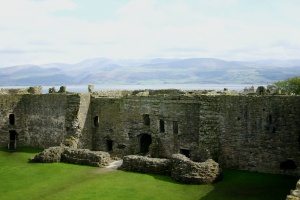

Work didn’t begin on the castle until the Welsh revolt of 1295 led by Madog ap Llywelyn on the island of Anglesey. The topography was different than at Caernarfon and Conwy. Built on a ‘fair marsh’, the castle took full advantage of the flat site on which it was built unlike Caernarfon and Conwy. The castle was built on the concept of “walls within walls” principle with four rings of formidable defenses. You can see still how the taller inner towers allowed archers to shoot at invaders without hitting their own forces in the tower in front of them.





The building of Beaumaris Castle was stopped in 1330. A survey from 1343 suggests the incomplete castle we see today is very much how it was left in 1330. Work was abandoned on the castle as resources had to be refocused on the war between the Britain and Scotland. Nevertheless it was sufficiently complete to be garrisoned and besieged during the revolt of Owain Glyn Dwr between 1400 – 1410.
Largely ignored by artists and travelers in search of the romantic and picturesque during the 18th and 19th centuries the castle fell into ruins and was largely ignored. The castle was purchased from the Crown by sixth Lord Bulkeley in 1925 whom cleared the ivy-clad castle. In 1986 it was listed as a historic site of outstanding universal value.

